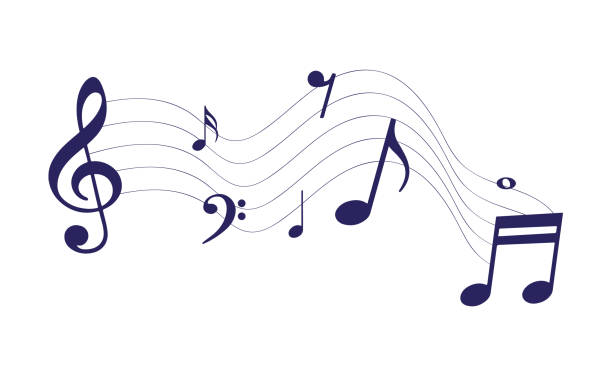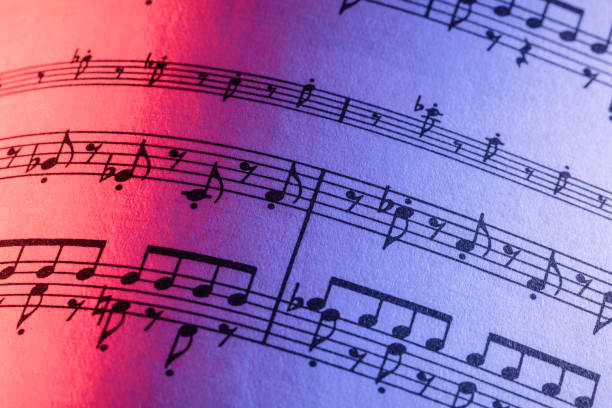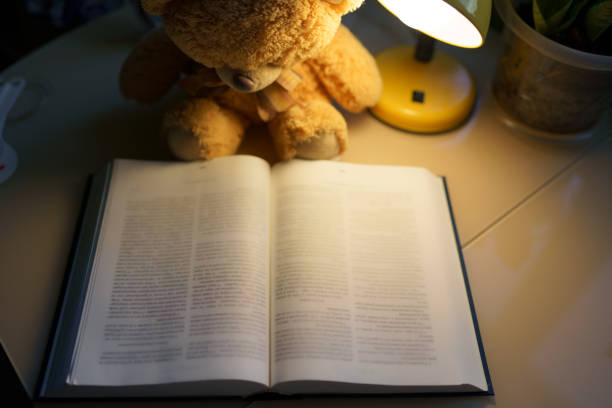How To Describe Music In Writing (12 Tips For Beginners)
How To Describe Music In Writing
How To Describe Music In Writing: Describing music in writing is an art that holds the power to transcend the auditory experience and paint vibrant, evocative landscapes with words.
Just as music itself is a universal language that transcends borders and cultures, the ability to convey its beauty, emotion, and intricacies through the written word is a skill that resonates with readers and listeners alike.
From the melodic storytelling of a symphony to the raw energy of a rock ballad, understanding how to harness the written word to capture the essence of music is an endeavor that bridges the realms of creativity and expression.
In the following exploration, we will delve into the techniques, elements, and intricacies of this art, illuminating the path to translating the boundless world of sound into a language that can be felt, understood, and cherished through the written word.
How To Describe Music In Writing
Describing music in writing involves conveying the auditory experience through words. Here’s a step-by-step process on How To Describe Music In Writing:
Listen Actively
Pay close attention to the music you want to describe. Listen to it attentively, and if possible, multiple times to understand its nuances.
Analyze the Genre
Identify the genre or style of music. Is it classical, rock, jazz, pop, hip-hop, or something else? Understanding the genre provides a foundation for your description.
Identify Key Elements
Melody: Describe the main tune or themes in the music.
Harmony: Discuss how different musical elements work together to create a sense of harmony or discord.
Rhythm: Mention the tempo and rhythm patterns. Is it fast or slow, steady or irregular?
Instrumentation: List the instruments or voices you hear and how they contribute to the overall sound.
Lyrics (if applicable): If the music has lyrics, comment on their content and how they interact with the melody and rhythm.
Emotions and Mood: Explain the emotional impact of the music. Does it evoke happiness, sadness, excitement, calmness, or another emotion? Describe the mood it conveys.
Structure
Discuss the song’s structure, such as verse-chorus-verse, or any notable variations in the composition.
Lyric Analysis (if applicable)
If there are lyrics, delve into their meaning, themes, and how they contribute to the overall message of the song.
Influences and Comparisons
Mention any notable influences on the music or how it compares to other artists or songs. This can help readers contextualize the music.
Notable Moments
Highlight specific moments or sections in the music that stand out, whether it’s a powerful guitar solo, a breathtaking vocal performance, or an unexpected change in tempo.
Imagery and Descriptive Language
Use vivid and descriptive language to paint a picture of the music. Compare elements of the music to real-life experiences, objects, or emotions.
Personal Response
Share your personal reaction to the music. Explain what you like or dislike about it and why.
Cultural and Historical Context (if relevant)
If the music has cultural or historical significance, provide context to help readers understand its importance.
Structure Your Description
Organize your writing in a coherent manner, whether it’s a paragraph or essay. Start with an engaging introduction, provide a detailed analysis in the body, and conclude with a summary of your thoughts.
Proofread and Edit
Before finalizing your description, proofread it for clarity, coherence, and grammar.
Remember that describing music is a subjective endeavor, and different people may perceive and interpret music differently. Your goal is to capture the essence of the music and help others understand its impact and significance through your words.

Understanding the Basics of Music
Understanding the Basics of Music is akin to unlocking the secret language of the universe, a symphony of mathematical patterns and emotional resonance.
It’s the compass guiding us through the labyrinth of melodies, rhythms, and harmonies, revealing the interconnectedness of notes and the stories they yearn to tell.
Much like deciphering an ancient manuscript, delving into music theory unveils a world where staccato becomes an exclamation mark, and crescendos unfold as grand sagas.
It’s a universal dialect that transcends borders, a sonic passport to traverse cultures, and a timeless art form that unfurls its mysteries with every note.
Brief explanation of music theory
Music theory serves as the foundational blueprint for understanding and composing music.
It’s the grammar that governs the language of sound, providing musicians and composers with a set of rules and principles for creating and interpreting musical works.
From the concept of scales and intervals to the intricacies of chord progressions and harmonies, music theory demystifies the structure and organization of music.
It enables musicians to communicate, not just with instruments, but with each other, sharing a common vocabulary that transcends the barriers of language.
With its roots tracing back through centuries, music theory stands as the universal key to unlocking the enchanting world of music, turning a seemingly chaotic soundscape into a structured and harmonious realm where creativity can truly flourish.
Recognizing different musical genres and styles
Recognizing different musical genres and styles is like embarking on a thrilling journey through the diverse landscapes of human creativity and emotion.
It’s the art of discerning the distinct footprints left by various cultures, historical periods, and artistic movements on the ever-evolving canvas of sound.
From the soul-stirring melancholy of the blues to the high-energy pulse of electronic dance music, each genre carries its own unique identity and narrative.
Jazz, with its improvisational spirit, paints a vivid portrait of freedom, while classical music, with its refined elegance, whispers tales of centuries past.
Whether it’s the rebellious roar of rock ‘n’ roll or the intricate tapestry of world music, recognizing musical genres and styles allows us to appreciate the rich tapestry of human expression, where notes and rhythms weave stories as diverse and colorful as the people who create and savor them.
The Art of Sensory Language
The Art of Sensory Language is the alchemist’s toolkit for transforming mere words into a symphony of sensations that dance upon the mind’s stage.
It’s a kaleidoscope of metaphors and similes, a tapestry woven with vivid adjectives that beckon the senses to life. Like a conjurer, it can make the scent of a rose bloom in a reader’s imagination, or the chords of a melody sing in their soul.
This artistry transcends mere description; it’s an incantation, an invitation to taste, touch, hear, see, and feel the story.
When the world is painted with sensory language, it becomes a vivid realm where words are the brushes, and sentences are the strokes, creating a masterpiece that resonates in the reader’s heart long after the final page is turned.

Engaging all five senses in music description
Engaging all five senses in music description is the gateway to a multi-dimensional sonic journey. Beyond the auditory realm, music possesses the extraordinary ability to evoke sensations that extend to touch, taste, sight, and even scent.
As the notes of a violin quiver, they can feel like a gentle caress against the skin; a rich symphony may taste like a decadent, bittersweet chocolate, and a vibrant melody can appear as a kaleidoscope of colors in the mind’s eye.
The resonance of a bass drum might reverberate in the chest like a thunderous heartbeat, while a delicate harp melody can conjure the sensation of delicate silk threads running through fingertips.
By embracing all the senses, music description transcends the confines of the auditory, painting a multi-sensory masterpiece that immerses the listener in an exquisite, otherworldly experience.
Analyzing Musical Elements
Analyzing musical elements is like peeling back the layers of a sonic universe, revealing the intricate gears and cogs that power the symphonic machinery.
It’s the detective work of deciphering the composer’s musical language, akin to reading between the lines of a captivating novel.
From the soul-stirring melodies that tug at heartstrings to the rhythmic cadence that ignites a primal dance within us, every note and nuance has a story to tell.
Harmony and dissonance play a dynamic tug-of-war, and tempo can be a masterful puppeteer, dictating the emotional rollercoaster of a composition.
It’s a journey through the spectrum of human emotion, where dynamics surge like ocean tides, and instrumentation weaves a tapestry of sound, as each instrument becomes a character in the grand narrative.
As we dissect these elements, we not only unlock the secrets of the music itself but also glimpse the essence of the human experience, making music analysis a voyage of endless wonder and discovery.
Describing the emotional impact of melodies
Describing the emotional impact of melodies is akin to translating the language of the heart into the realm of words. Melodies possess an extraordinary power to bypass the intellect and resonate directly with the soul.
They can be like a balm, soothing the wounds of a weary spirit, or a catalyst, igniting a fire of passion within.
Some melodies may evoke a sense of nostalgia, flooding the mind with memories of times long past, while others can evoke an indescribable yearning for something unattainable.
The emotional impact of melodies can range from the euphoric heights of joy to the profound depths of sorrow, touching upon the full spectrum of human sentiment.
In the world of music, melodies are the storytellers, and the emotions they convey are the vivid colors that paint the canvas of our innermost experiences, making the appreciation and description of these emotional impacts a truly transcendent endeavor.
Clarifying the concept of harmony
Clarifying the concept of harmony in music is like unveiling the intricate dance of celestial bodies in the night sky.
It’s the art of understanding how different musical notes interconnect and resonate with one another to create a sublime, unified whole.
Harmony is the harmonious marriage of sounds that adds depth, texture, and emotional resonance to a composition.
It’s the magic that turns individual voices and instruments into a choir of consonance, weaving a tapestry of chords that can soothe, excite, or stir the soul.
Just as in life, where harmonious relationships foster unity and beauty, in music, harmony is the force that binds melodies together, transforming what might be chaos into a symphonic masterpiece.
Clarifying the concept of harmony is to grasp the essence of this hidden language within music, unlocking the door to a world where different notes and voices blend together in a breathtaking, euphonic unity.
Understanding rhythmic patterns
Understanding rhythmic patterns in music is akin to decoding the heartbeat of a composition, the very pulse that drives its emotional resonance.
Rhythmic patterns are the invisible scaffolding upon which melodies and harmonies are woven, providing structure, momentum, and a unique sense of movement.
They are the conductor’s baton, dictating the tempo and guiding the listener through the musical narrative. From the hypnotic, toe-tapping rhythms of Latin percussion to the intricate, syncopated beats of jazz, each genre and piece carries its distinct rhythmic signature.
Recognizing these patterns is like learning a secret code, enabling the listener to predict, appreciate, and even anticipate the twists and turns of a musical journey.
In the realm of music, rhythmic patterns are the steady heartbeat of a living, breathing composition, and understanding them is to feel the very soul of the music itself.
Defining dynamic changes in music
Defining dynamic changes in music is to explore the breathtaking highs and lows, the rise and fall, and the ebb and flow of a musical voyage.
Dynamics are the expressive fluctuations in volume, intensity, and power that sculpt the emotional landscape of a composition.
They can be as gentle as a whisper, drawing the listener into a world of intimate reflection, or as powerful as a thunderclap, electrifying the senses with a surge of raw energy.
In the symphonic realm, dynamics are the artists’ brushstrokes on a sonic canvas, revealing the subtleties of emotion and drama.
The contrast between soft and loud, between tranquility and turmoil, is where the magic happens, making dynamic changes a fundamental tool for musicians to communicate their intentions and elicit profound emotional responses from their audience.
To define dynamic changes in music is to unlock the gateway to a world where silence and thunder coexist, where every crescendo and decrescendo holds the power to stir the soul and create a vivid, emotional landscape.
Highlighting the significance of different instruments
Highlighting the significance of different instruments in music is like celebrating the unique voices in a grand, multicultural orchestra of sound.
Each instrument is a character with its own distinct personality, capable of expressing a wide range of emotions and moods.
From the soaring, lyrical notes of a violin that can evoke profound nostalgia, to the bold, earthy resonance of a brass instrument that can command attention and authority, each instrument contributes its own color to the sonic palette.
The significance of different instruments lies in their ability to convey the essence of a musical composition, to shape its texture, and to transport the listener on a musical journey that transcends words.
Whether it’s the gentle caress of a flute, the robust roar of a piano, or the rhythmic punch of a drum, each instrument has a vital role to play, and understanding and appreciating this significance allows us to immerse ourselves in the intricate tapestry of musical artistry.
Describing Emotional Resonance
Describing emotional resonance is like capturing the intangible echoes of the human soul in words. It’s an exploration of the profound connections music forges within us, transcending the boundaries of language.
Emotional resonance is that subtle but powerful force that reaches deep into our hearts, evoking a symphony of feelings and memories.
It’s the warm embrace of a melancholy melody on a rainy day, the triumphant surge of a crescendo that ignites our spirits, and the delicate, bittersweet dance of notes that mirror the complexities of our own emotions.
In the world of music, emotional resonance is the universal language that binds humanity together, uniting us through shared experiences and feelings that words alone could never express.
It’s the emotional roadmap of a composition that weaves a story in our hearts, and to describe it is to unveil the hidden magic of music itself.

Recognizing the emotional content of music
Recognizing the emotional content of music is akin to deciphering the hidden messages whispered by the heart and soul of a composition.
Music, like a skilled orator, has the extraordinary power to convey a vast spectrum of human emotions. From the tender sorrow of a mournful violin to the jubilant exuberance of a triumphant trumpet, music is a language of feelings, unbound by words.
It’s a mirror that reflects the depths of human experience, offering a sanctuary for introspection, healing, and celebration.
Recognizing the emotional content of music is to embark on an empathetic journey, where the melodies and harmonies become the emotional palette of the soul, revealing not only what the composer intended but also what the listener seeks to find.
In this rich tapestry of sound, we find solace, understanding, and an ever-present companion for life’s most intimate moments, making the recognition of emotional content in music a truly profound and transformative experience.
Relating personal experiences and emotions to the music
Relating personal experiences and emotions to music is akin to forging an intimate connection with the very essence of a composition.
Music, as a universal language of emotions, serves as a conduit for our own stories, heartaches, and joys. It possesses the incredible ability to become a canvas upon which we paint our innermost feelings and experiences.
A poignant ballad might resonate with the ache of a lost love, while an uplifting symphony can mirror the elation of personal triumph.
We often find solace and empathy in lyrics or melodies that seem to speak directly to our souls, allowing us to heal, reflect, or simply revel in the emotions of the moment.
In this way, music becomes a mirror, a confidant, and a timeless companion that helps us make sense of our own emotional landscape, intertwining our personal narratives with the timeless tales told through notes and rhythms.

Incorporating Cultural and Historical Context
Incorporating cultural and historical context into our musical journey is akin to unearthing a hidden treasure chest of stories, traditions, and emotions.
Music is a profound reflection of the society and time from which it springs, and when we delve into its historical and cultural roots, we unearth a vibrant tapestry of human experiences.
Whether it’s the blues, born from the struggles of African Americans in the Deep South, or the intricate ragas of Indian classical music, steeped in centuries-old traditions, each note carries the weight of its heritage.
We become time travelers, transported to the Renaissance courts, the jazz clubs of the Harlem Renaissance, or the ancient temples of the East, all through the melodies that have been handed down through generations.
By incorporating cultural and historical context, we not only deepen our appreciation of music but also gain profound insights into the interconnectedness of the human experience, making each note a bridge between past and present, and between cultures far and wide.
Utilizing Music Analysis Tools
Utilizing music analysis tools is like arming ourselves with the spectacles of an audio detective, granting us X-ray vision into the very anatomy of sound.
These digital instruments of inquiry enable us to dissect compositions, uncover the hidden patterns, and decode the musical DNA within.
From spectral analysis that visualizes the harmonic spectra, to tempo mapping that unravels the intricate rhythmical intricacies, these tools are the key to unlocking the secrets of musical masterpieces.
It’s like having a sonic microscope, allowing us to zoom in on the nuances of each note, from the faintest pianissimo to the thunderous fortissimo.
Whether you’re a musician, a composer, or simply an avid listener, these tools are a backstage pass to the mesmerizing symphony of music, offering fresh perspectives and untold revelations within each carefully crafted score.
In a world where technology and artistry converge, music analysis tools are our compass through this mesmerizing soundscape, revealing layers and subtleties that even the keenest ear might miss.
Incorporating audio excerpts to enhance descriptions
Incorporating audio excerpts to enhance descriptions is like infusing a written narrative with the very heartbeat of the music itself.
It’s the alchemical fusion of words and sound, creating a multi-sensory experience that transcends the limitations of text.
When we weave audio samples into our descriptions, we grant the reader a front-row seat to the sonic journey, allowing them to not only visualize but also hear the very notes and rhythms we’re describing.
It’s an invitation for the audience to step into the world of the composition, to be bathed in its emotional resonance, and to feel the music as it unfolds.
Whether it’s the soulful wail of a blues guitar, the delicate serenade of a violin, or the thunderous crash of a rock drum solo, these audio excerpts bring the words to life, allowing the reader to fully immerse themselves in the magic of music, making the description an unforgettable and truly immersive experience.
Frequently Asked Questions (FAQ) about How To Describe Music In Writing
Why is describing music in writing important?
Describing music in writing is crucial because it allows you to convey the emotional and sensory aspects of music, making it accessible to a broader audience. It enhances the listening experience by offering context and interpretation, helping readers connect more deeply with the music.
What are the key elements to consider when describing music?
The key elements to consider when describing music include melody, harmony, rhythm, tempo, dynamics, instrumentation, and emotional resonance. These elements collectively shape the unique character and impact of a musical composition.
How can I effectively describe the emotional content of a piece of music?
To describe the emotional content of music, focus on the feelings and moods it evokes. Use descriptive language and metaphors to convey emotions, and share personal experiences or associations the music brings to mind.
Why is it important to incorporate cultural and historical context when describing music?
Incorporating cultural and historical context enriches music descriptions by providing insights into the origins, influences, and evolution of a musical piece. It helps readers appreciate the deeper meaning and significance of the music.
What tools can I use to analyze music for a more in-depth description?
Music analysis tools like spectrograms, tempo mapping software, and even notation software can aid in breaking down the various components of a musical piece. These tools provide a visual representation of the music’s structure and dynamics.
How can I engage all five senses in music description?
Engaging all five senses involves using descriptive language that appeals to sight, sound, touch, taste, and smell. Metaphors and vivid adjectives can help readers visualize and experience the music more fully.
Can you provide examples of effective music descriptions?
Certainly! Throughout our exploration, we will provide numerous examples and case studies that illustrate effective music descriptions, showcasing the diverse techniques and styles used by seasoned writers.
How can I receive feedback on my music descriptions to improve my skills?
Seeking feedback from peers, instructors, or participating in writing communities and workshops is an excellent way to refine your music description skills. Constructive criticism can help you hone your writing and better connect with your audience.
What’s the best way to get started with describing music in writing if I’m a beginner?
Start by listening to various types of music and practice writing your impressions and emotions evoked by each piece. Experiment with different techniques, read other music descriptions, and don’t be afraid to be creative in your approach.
How can I use technology to enhance my music descriptions?
You can incorporate audio excerpts, utilize music analysis software, and explore multimedia platforms to create immersive music descriptions. Technology offers powerful tools for capturing the essence of music in your writing.
Conclusion
In conclusion of How To Describe Music In Writing, the art of describing music in writing is a captivating journey that transcends the boundaries of sound and language, opening doors to the boundless realms of human emotion and creativity.
Through this exploration, we’ve uncovered the tools and techniques to articulate the intricate beauty of music, translating it into words that can touch the hearts and minds of readers and listeners alike.
Music, in its many forms and styles, becomes a living, breathing entity when brought to life through the art of description.
Whether you’re a musician, a writer, or a passionate music enthusiast, this endeavor offers a profound opportunity to deepen your connection with the world of sound, to unveil its stories and secrets, and to share the magic of music with the world in a way that resonates far beyond the realm of notes and melodies.
So, whether you’re aiming to craft vivid symphonic narratives or simply to better understand the music that moves your soul, the journey of describing music in writing is a boundless and endlessly rewarding pursuit.






